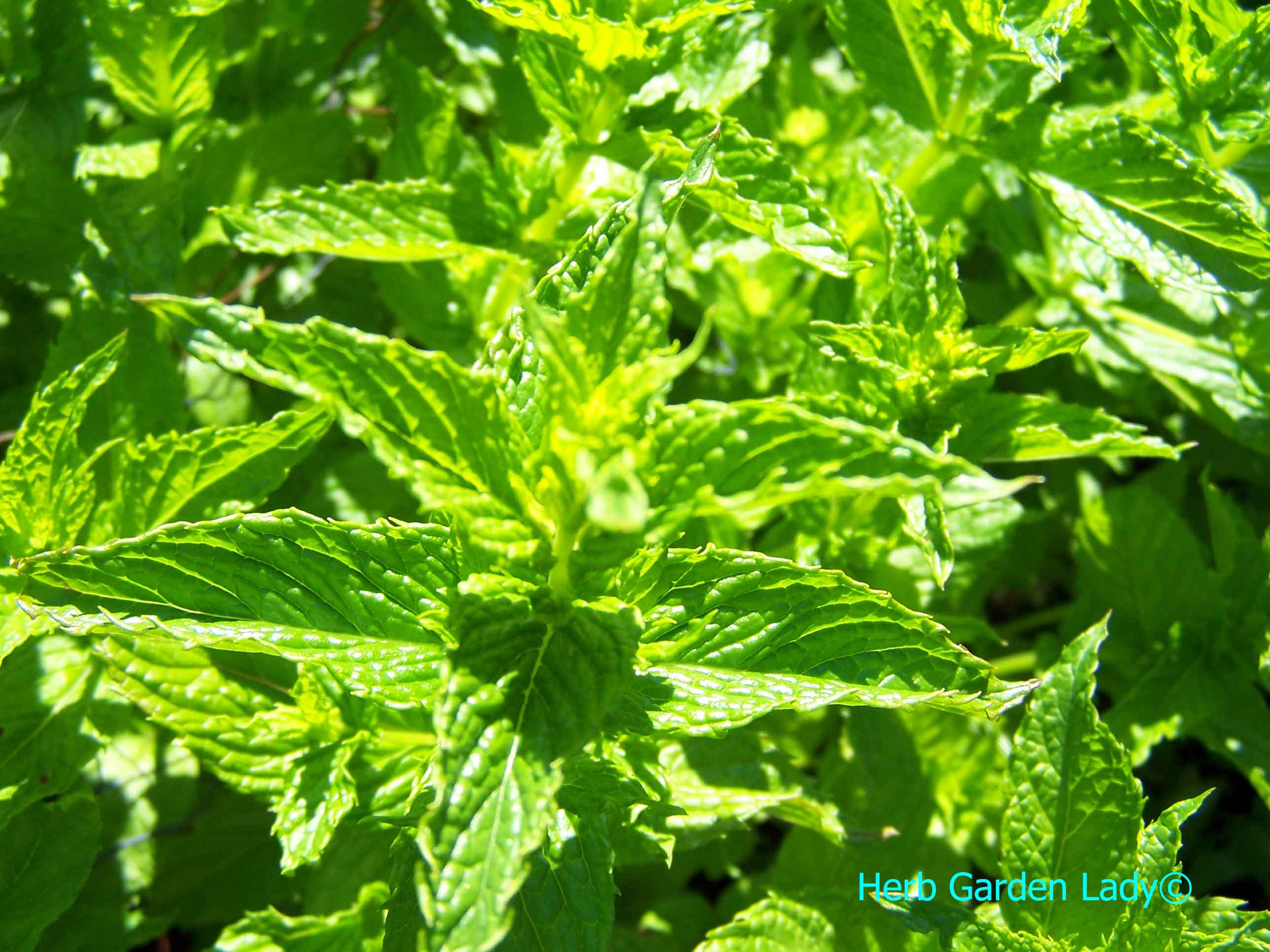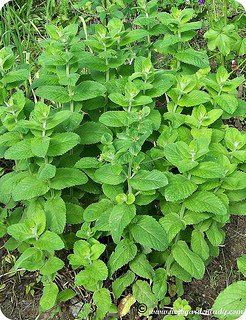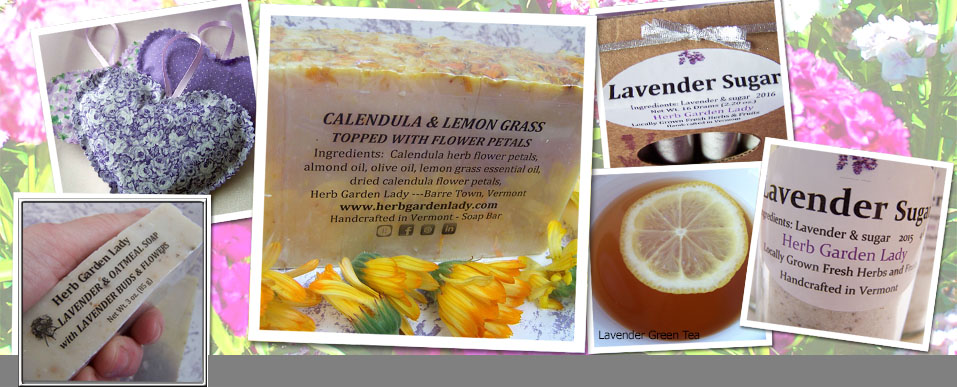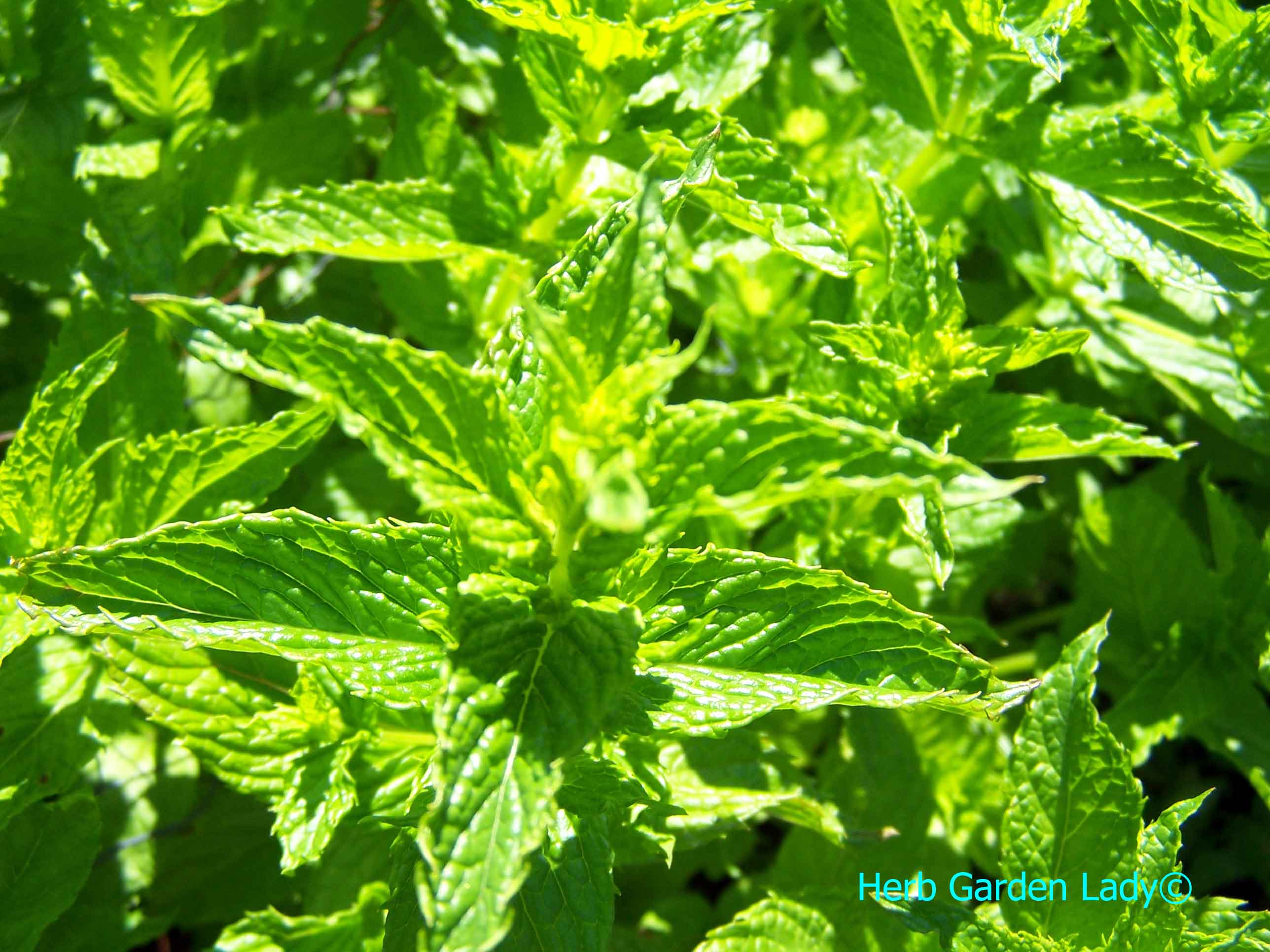The Mint Herb
Grow, Harvest & Enjoy Its Many Uses
Container Garden Dill Rosemary Lavender
The mint herb was so highly esteemed in Biblical times that the Pharisees collected tithes in mint, dill and cumin. Today with over 600 varieties grown it’s hard to decide which one to grow.
Growing Mint
This herb isn’t that particular and will do well in partial shade or sun.
This herb loves moisture and needs a well-drained, neutral pH (alkaline) soil rich in nutrients to produce the most highly esteemed essential oils and flavor.
To propagate this herb just take a root or stem cutting or divide the mint in the spring or fall replanting it with rich nutrient soil. If you want this herb all over your herb garden, then just plant it where you would like it to grow. Otherwise, cut out a clean empty milk jug or pot with one drain hole at the bottom. Make sure the container lip sits above the soil surface. Certain mint varieties will grow even during the winter months and when spring comes your garden is overtaken with this herb.
Although this herb is easy to grow it does need to be maintained to make sure it doesn’t overtake your herb garden. Contain this herb in a container herb garden to later enjoy the fresh leaves when making mint water or adding to culinary dishes.
While growing mint you notice rust or lots of brown spots
on the leaves, dig up the plant and burn it. It has the mint rust disease and
may spread to other mint varieties. *This happened with my peppermint under my elderberry bushes and I had to dig it up and burn the leaves.
Harvest the leaves when in season picking them just before flowering to get the most flavorful and essential oils for aromatherapy uses.
When preserving the mint herb pick the leaves or cut the long stems in the morning before the heat of the day to preserve the essential oils. Then wash gently to remove any debris, pollen or insects.
Let it dry in an open area like your garage when it's at least 75
degrees outside so it dries quickly. You’ll know its fully dry when crushed easily and it
crumbles. It will also make a crunchy sound when crushed between your fingers. This video show you How To Dry Herbs
You can also freeze or infuse the leaves in oil or vinegar for later use.
Mint Herb Varieties for Teas
‘Moroccan’ - Mentha spicata, ‘Spearmint’ – Mentha spicata, ‘Pineapple mint’ – Mentha suaveolens, ‘Applemint’ – Mentha suaveolens, ‘Ginger mint’ – Mentha arvensis, ‘Orange mint’ – Mentha aquatica, ‘Chocolate mint’ – Mentha x piperita piperita, ‘Menthol mint’ – Mentha spicata and ‘Peppermint’ – Mentha x piperita piperita
Best Varieties for Culinary Use
‘English mint’ – Mentha spicata cv., ‘Spearmint’ – Mentha spicata, ‘Vietnamese mint’ – Mentha x gracilis, ‘Mojito mint’ – Mentha x villose, ‘Margarita mint’ – Mentha ‘Margarita’ and ‘Oregano-thyme mint’ – Mentha ‘Oregano-thyme’
Mint Herb Recipes
Mint Tea
1 ½ green tea your choice
Handful of fresh mint leaves
Sugar
Heat the water to boiling
Add the green tea and fresh mint leaves either using a tea ball or tea bag
Add sugar to your taste
Enjoy
Mint Julep
Makes 3 ¼ cups
2/3 cup water
4 tbs. chopped mint
2 tbs sugar
Juice of 1 lemon
2 cups sparkling mineral water
½ cup bourbon
Boil the water and pour it over the mint. Add the sugar and stir until it’s entirely dissolved. Add the lemon juice, and then leave the mixture to cool.
Strain into a jug, stir in the mineral water and the bourbon. Pour on to ice cubes in tall glasses, add a sprig of mint and serve. Adopted by Hazel Evans The Herb Basket
To learn more about container garden, rosemary or lavender







